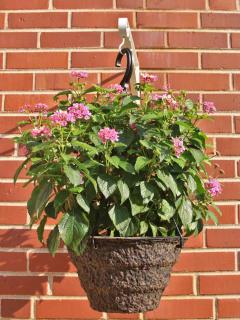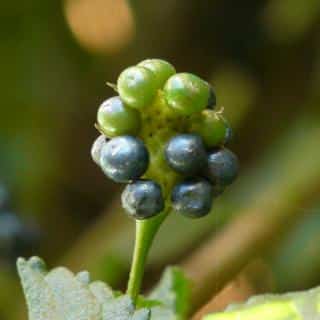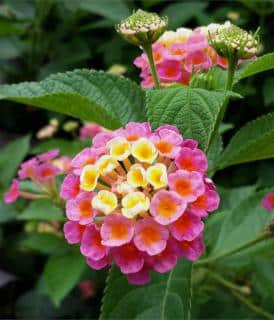

Lantana is a perennial flower shrub that gives a special touch to garden boxes and flower beds.
Lantana facts in a blink
Name – Lantana
Family – Verbenaceae
Type – perennial
Height – 20 to 60 inches (50-50 cm)
Exposure – full sun
Soil: ordinary – Foliage: deciduous – Flowering: end spring → end fall
Take advantage of its abundant blooming from spring to fall coupled with relatively easy care.
 It is a good idea to plant lantana right at the start of spring when they’re purchased in nursery pots.
It is a good idea to plant lantana right at the start of spring when they’re purchased in nursery pots.
If the area you live in is prone to frost, best plant your lantana in a pot so that you can bring it indoors over winter: this plant is vulnerable to freezing.
When sowing from seed, best sow under shelter in March, transplant once to nursery pots during the month of April, and set in place in May.
Preparing lantana cuttings is the best way to propagate this plant.
 Wait for the spring vegetation to get back in stride.
Wait for the spring vegetation to get back in stride.Of course, the (edible!) berries self-sow and sprout quite readily.
Lantana can either be left to grow to its natural shape, or you can direct the growth of a young plant by forming its stem.
The pruning is performed in winter. It must be very short: cut each lantana branch back to 1 or 2 buds.
In summer, remove wilted flowers regularly so as to boost flower-bearing.
Take note that lantana can only survive as a perennial in areas where the winter is mild.
In colder places, it must be considered an annual for which you’ll have to do the following:
This very beautiful perennial, considered by some to already be a sub-shrub, produces beautiful flowers in mixed yellow and pink colors.

It also is used for medicinal purposes and dried leaves are also used for tea.
Pink varieties produce many more fruits. You’ll gleefully discover that ripe Lantana berries are edible, but beware because when still unripe they contain toxins, so wait until they’re deep black-blue before nibbling on them!
Lantana is perfect for planting in flower beds, and will also do very well in garden boxes.
Flower clusters on lantana are actually a cluster of smaller individual flowers. Each one starts out in one color and gradually switches to another. For example, on many lantana shrubs, they start out yellow and then turn orange or pink.
The trigger for this is fertilization. Instead of wilting away like most flowers, on lantana they stay put and change hue.
This helps the plant attract pollinating insects from farther out since it gives the impression of more numerous flowers.
When they get closer, insects are naturally drawn to the younger flowers, so they aren’t completely duped by this scheme and still get something out of it!
Lantana cuttings are easy to perform in summer, so go ahead and multiply your plants for free!